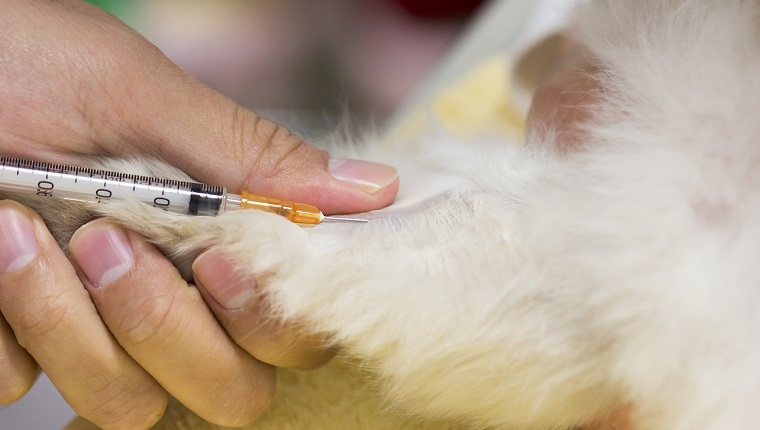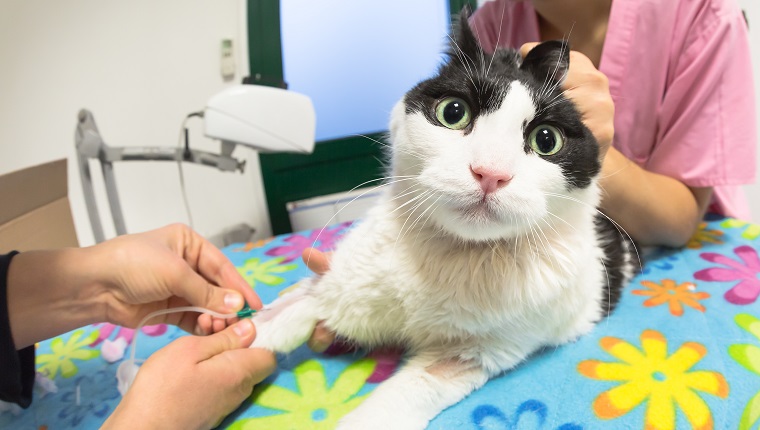Pancytopenia in cats is a medical term that refers to the development of a number of blood-related issues that all occur at the same time. Some of those issues include leucopenia, non-regenerative anemia, and thrombocytopenia.
Historically, these issues can affect all cats equally, regardless of age, gender, and breed.
If you see signs that your cat might be suffering from blood-related issues, then you must consult your veterinarian for a proper diagnosis and course of treatment. Here’s what you should know about the symptoms, causes, and treatments of pancytopenia in cats.
Symptoms Of Pancytopenia In Cats
Pancytopenia in cats presents different symptoms depending on whichever underlying cause is present. In cases involving thrombocytopenia, for example, small bruises referred to as petechial hemorrhate will appear on a cat’s body.
When it comes to leucopenia, a persistent fever can occur.
Where anemia is present, a feline’s gums can turn a pale color, and the cat is likely to act in a lethargic manner.
In general, the presence of blood in a cat’s urine or the appearance of frequent nosebleeds are symptoms.
Causes Of Pancytopenia In Cats

There are a number of potential causes of pancytopenia in cats. Some of the most common causes include:
- Contracting an infectious disease
- Aplastic anemia
- Bone marrow cancer
- Hepatitis
- Exposure to poisons (including thallium)
- Ehrlichiosis (brought on by ticks)
Treatments For Pancytopenia In Cats
If you suspect that your cat is suffering from pancytopenia, your veterinarian will want to carry out a full physical examination. They’ll use urine and blood tests to form a diagnosis. Additionally, they may carry out bone marrow tests to confirm a case.
When providing treatment, it’s vital to deal with the underlying condition. In some instances, this might involve the use of a blood transfusion or antibiotics.
As ever, if your vet prescribes your cat antibiotics, it is vital that you stick to the precise dosage and frequency instructions, along with completing the full course of medication.
While your cat recovers at home, it is important to keep up with regular vet appointments. This is so that they can carry out blood work to accurately monitor the status of your kitty’s health and recovery.
In general, ensuring that your cat is fully up to date with their vaccinations is a smart way to lessen the chances that they will develop this condition.
Has your cat ever developed pancytopenia? What type of symptoms did you see? Tell us all about it in the comments below.




